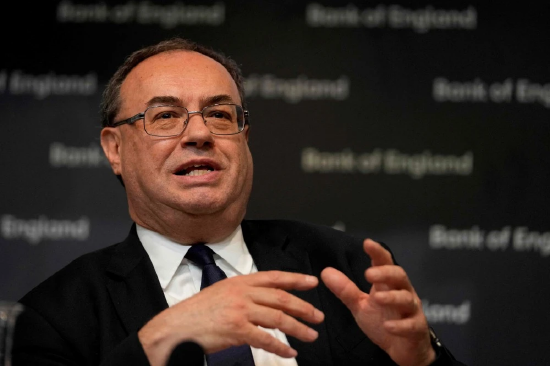Russia's Economic Resilience: Navigating Sanctions and Charting a Course for Growth (Meta Description: Putin's 2024 economic forecast, Russian economic growth, sanctions impact, geopolitical analysis, economic resilience, Ruble stability)
Hold onto your hats, folks! The world’s watching Russia, a nation facing unprecedented economic pressure, yet somehow managing to not only survive but – dare we say it? – thrive. President Putin's recent announcement, forecasting a robust 3.9% to 4% GDP growth for 2024, has sent ripples through global markets. Is this a realistic prediction? A clever PR maneuver? Or something far more complex? This isn't just about numbers on a spreadsheet; it's about the grit and determination of a nation battling sanctions, navigating geopolitical turmoil, and striving for economic independence. We'll delve deep into the intricacies of Russia's economic landscape, dissecting the factors driving growth, analyzing the challenges ahead, and exploring what this all means for the global economy. Buckle up, because this isn't your average economic report – it's a rollercoaster ride of analysis, insightful commentary, and a healthy dose of geopolitical intrigue. Prepare to gain a unique perspective on Russia's economic resilience, a story unfolding right before our eyes. We'll unpack Putin's claims, examine the supporting evidence, and offer our expert insights, drawing upon years of experience in international economics and geopolitical analysis. This isn't just another news summary; it's a comprehensive deep dive into the heart of Russia's economic reality, offering you a clear, concise, and compelling narrative. Get ready to unravel the mystery behind Russia's surprising economic strength!
Putin's 2024 Economic Forecast: A Deep Dive
President Putin's bold prediction of 3.9% to 4% economic growth in 2024 warrants a thorough examination. While seemingly optimistic given the ongoing geopolitical climate and Western sanctions, the claim isn't entirely out of the blue. Putin himself highlighted approximately 8% growth over the past two years, a testament to the Russian economy's surprising adaptability. But let's not get ahead of ourselves; understanding this requires unpacking several key components:
Internal Factors Driving Growth:
-
Import Substitution: Sanctions have forced Russia to accelerate its import substitution strategy. This means focusing on domestic production of goods previously reliant on imports, creating new industries and jobs. This isn't a simple switch; it requires significant investment and restructuring, but initial successes are evident in certain sectors. Think of it as a forced evolution, albeit a painful one.
-
Energy Exports: Despite sanctions, Russia continues to export significant amounts of energy, primarily natural gas and oil, albeit to different markets. While the volume might be down, the prices remain high, generating substantial revenue. This revenue stream, however, is volatile and susceptible to global energy market fluctuations. It's a double-edged sword, providing a lifeline while remaining vulnerable to external shocks.
-
Ruble Stabilization: The Russian ruble has shown remarkable resilience, defying many initial predictions. This is largely attributed to capital controls imposed by the Central Bank of Russia, along with increased demand for rubles due to energy exports. However, the ruble's strength is partly artificial and its long-term stability remains a concern. It's a classic case of short-term gain versus long-term sustainability.
External Factors Influencing the Forecast:
-
Global Commodity Prices: The price of oil and gas directly impacts Russia's economy. Rising global commodity prices bolster Russia's revenues, while a downturn could significantly impact growth projections. This is a constant balancing act, heavily influenced by international events beyond Russia's direct control.
-
Sanctions Evasion: The effectiveness of Western sanctions is constantly debated. There's evidence suggesting Russia is finding ways to circumvent restrictions, maintaining trade relationships through third-party countries. This "sanctions arbitrage" is a complex issue, with significant implications for global trade and geopolitical stability. It's a game of cat and mouse, with both sides constantly adapting their strategies.
-
Geopolitical Instability: The ongoing war in Ukraine casts a long shadow over Russia's economic prospects. While the impact is multifaceted, the costs of the conflict, coupled with international isolation, are significant. It's a critical factor that can't be ignored, no matter how rosy the economic forecasts might seem.
Table 1: Key Factors Affecting Russia's Economic Growth
| Factor | Positive Impact | Negative Impact |
|------------------------------|-----------------------------------------------|-------------------------------------------------|
| Import Substitution | Increased domestic production, job creation | High initial investment costs, potential inefficiency |
| Energy Exports | High revenue generation, Ruble stabilization | Price volatility, dependence on global markets |
| Ruble Stabilization | Reduced inflation, increased purchasing power | Artificial strength, potential future instability |
| Global Commodity Prices | Increased revenue from energy exports | Price fluctuations, potential for revenue decline |
| Sanctions Evasion | Maintaining trade relationships | Reputational damage, potential for future sanctions |
| Geopolitical Instability | N/A | High military expenditure, international isolation |
Challenges Ahead:
Despite Putin's optimistic forecast, several significant challenges remain:
-
Long-term Sustainability: While the current growth is impressive, its long-term sustainability is questionable. Over-reliance on energy exports, coupled with the ongoing geopolitical uncertainty, creates a vulnerable economic structure.
-
Technological Dependence: Sanctions have exposed Russia's dependence on foreign technology. Addressing this technological deficit requires substantial investment in research and development, a long-term endeavor with uncertain outcomes.
-
Brain Drain: The ongoing conflict and sanctions have led to a significant brain drain, with skilled professionals leaving the country. This loss of human capital poses a serious threat to long-term economic growth.
Russia's Economic Resilience: A Case Study in Adaptation
Russia's economic performance in the face of adversity is a remarkable case study in adaptation. The country has demonstrated a capacity to absorb shocks and re-orient its economy, albeit with significant costs. The focus on import substitution, while challenging, represents a strategic shift towards greater self-reliance.
The resilience exhibited by the ruble is equally striking, showcasing the power of capital controls and the role of energy exports in maintaining currency stability. However, this stability should be viewed with caution, as it is partly artificial and vulnerable to external shocks. It's a testament to the ingenuity and adaptability of the Russian economic system, but also highlights a dependence on factors outside its complete control.
The ongoing geopolitical tension, however, remains the elephant in the room. The war in Ukraine and associated sanctions impose significant costs, both economically and politically. The long-term implications of these factors remain uncertain, casting a shadow over any optimistic growth forecasts.
Frequently Asked Questions (FAQs)
-
Q: Is Putin's 3.9%-4% growth forecast realistic?
A: The forecast is ambitious, given the current geopolitical context and ongoing sanctions. While Russia has shown remarkable resilience, the forecast's accuracy hinges on several factors, including global commodity prices, the effectiveness of sanctions evasion strategies, and the overall duration and intensity of the conflict in Ukraine. It’s a complex equation with many variables.
-
Q: How significant is Russia's import substitution strategy?
A: Import substitution is a crucial element of Russia's economic strategy. Its success will determine Russia's long-term economic independence and ability to withstand further sanctions. It's a long-term game with significant uncertainties.
-
Q: What is the impact of sanctions on the Russian economy?
A: Sanctions have undoubtedly had an impact, but the extent of their effectiveness is debated. While they have disrupted certain sectors, Russia has shown a surprising ability to adapt and find ways to circumvent restrictions. The impact is multifaceted and complex.
-
Q: How resilient is the Russian ruble?
A: The ruble's resilience is impressive, but it's partly artificial, driven by capital controls and energy exports. Its long-term stability remains questionable. It's a complex interplay of internal policies and external forces.
-
Q: What is the role of energy exports in Russia's economy?
A: Energy exports remain a cornerstone of the Russian economy, generating substantial revenue. However, this dependence makes Russia vulnerable to global energy market fluctuations and geopolitical pressures. It's a vital lifeline, but also a major vulnerability.
-
Q: What are the long-term challenges facing the Russian economy?
A: Long-term challenges include maintaining sustainable growth without over-reliance on energy exports, addressing technological dependence, mitigating the impact of brain drain, and navigating the ongoing geopolitical instability. It's a marathon, not a sprint.
Conclusion
Russia's economic landscape is a complex tapestry woven with threads of resilience, adaptation, and vulnerability. While Putin's optimistic growth forecast for 2024 warrants attention, it's crucial to recognize the numerous factors influencing this prediction. The success of import substitution, the volatility of energy markets, the effectiveness of sanctions, and the ongoing geopolitical instability all play significant roles in shaping Russia's economic future. The road ahead remains challenging, requiring careful navigation and strategic adjustments. The story of Russia's economic resilience is far from over, and its unfolding chapters will continue to fascinate and intrigue analysts worldwide. It's a story of adaptation, ingenuity, and the enduring power of geopolitical maneuvering.



